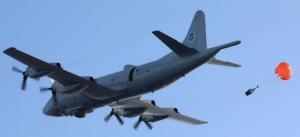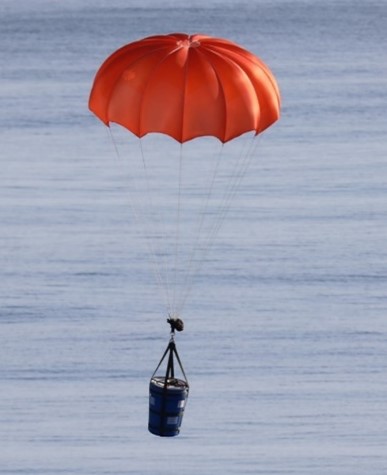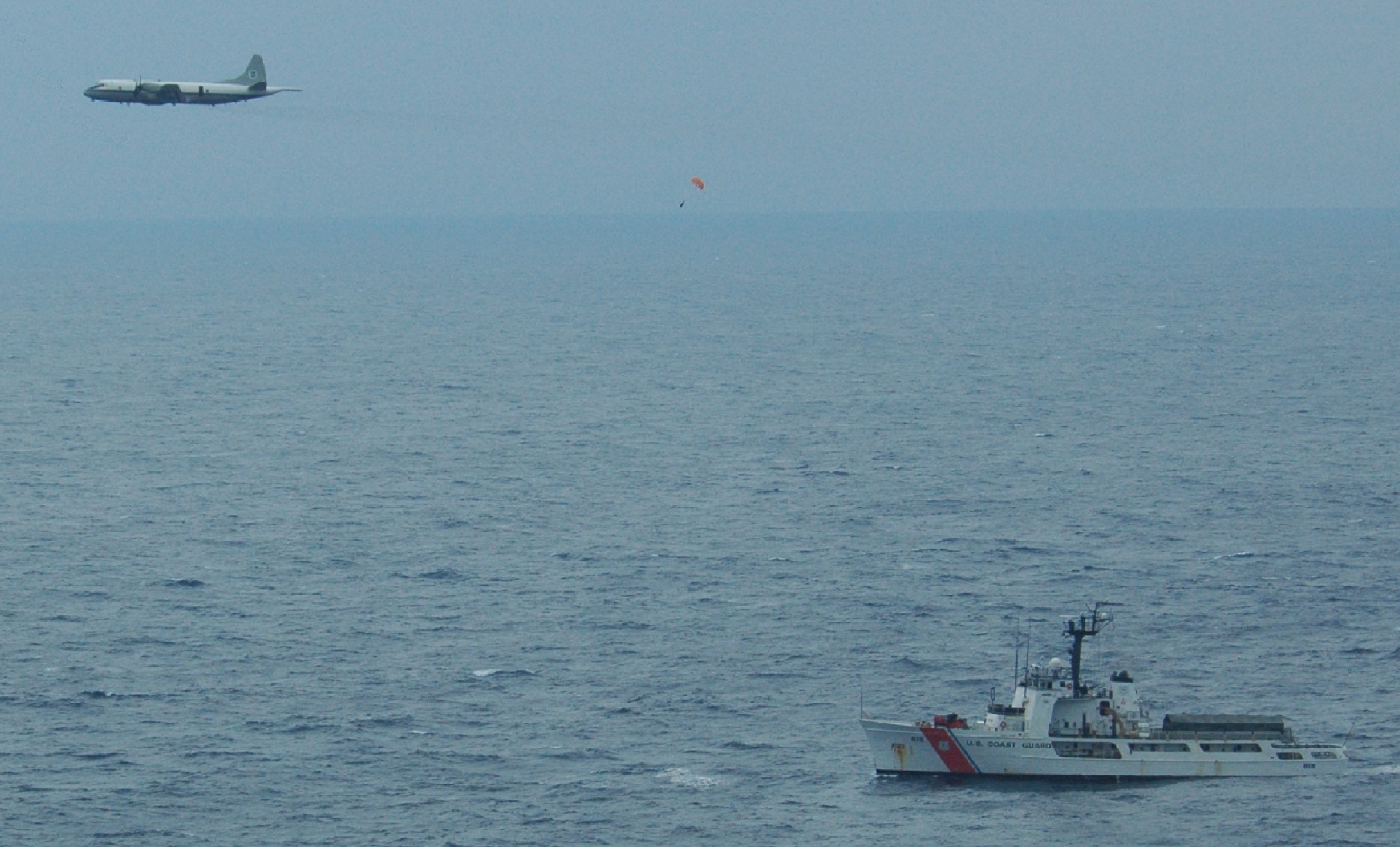02/28/2024 –

Airborne Deployable Delivery System (ADDS) at-sea resupply operations via the AMO P-3 enables U.S. Coast Guard cutter crews to remain on station and operational instead of returning to port to receive critical resources.
JACKSONVILLE, FL— U.S. Customs and Border Protection (CBP), Air and Marine Operations (AMO) collaborated with several federal partners to test and implement new aerial resupply operations at sea, saving approximately $16 million since March 2022.
“The P-3’s responsive airlift capabilities enable deployment of time-sensitive, mission-critical supplies to our partners operating in the source and transit zones,” said Executive Director of CBP National Air Security Operations T.J. Emerick. “Aerial delivery via Airborne Deployable Delivery System is highly flexible, swift, and effective.”
AMO completed the resupply operation, known as an Airborne Deployable Delivery System, with the U.S. Coast Guard and Joint Interagency Task Force-South in the Eastern Pacific in January. The operation enables air transport of cargo and equipment to U.S. Coast Guard crews via parachute, helping to maintain task force operations.
The rapid delivery technique enables Coast Guard cutter crews to remain on station and operational instead of returning to port to receive critical resources, preserving both fuel and operational patrol time.
“Through detailed logistical planning and enhanced interoperability with our interagency and international partners, we can keep operational assets on station for longer periods of time,” said Coast Guard Rear Admiral Mark J. Fedor, director of Joint Interagency Task Force-South. “That means more drugs off the streets and rapid dismantlement of smuggling networks.”
Aerial resupply at sea via the airborne system saves approximately $1.3 million for each operation. AMO P-3 aircrews have conducted 16 airborne resupply missions with U.S. Coast Guard crews and task force teams since March 2022. These resupply missions have also allowed Coast Guard crews that would normally be required to travel to and from port to complete logistical supply runs to stay on station for approximately 75 additional days.
P-3 aircraft are high-endurance, all-weather, tactical aircraft. They are primarily used to conduct long-range aerial patrols and surveillance missions along the U.S. borders and in drug transit zones in Central and South America to prevent attempts to smuggle persons or contraband. P-3 capabilities are vital to AMO’s National Air Security Operations program and to the organization’s partnership with U.S. Southern Command. This partnership bolsters support to U.S. and international law enforcement through the sharing of information and intelligence to help detect and disrupt targets.
For additional news releases and other AMO information, visit www.cbp.gov or follow AMO on X (formerly Twitter), Instagram, and Facebook.
U.S. Customs and Border Protection is the unified border agency within the Department of Homeland Security charged with the comprehensive management, control, and protection of our nation’s borders, combining customs, immigration, border security, and agricultural protection at and between official ports of entry.

